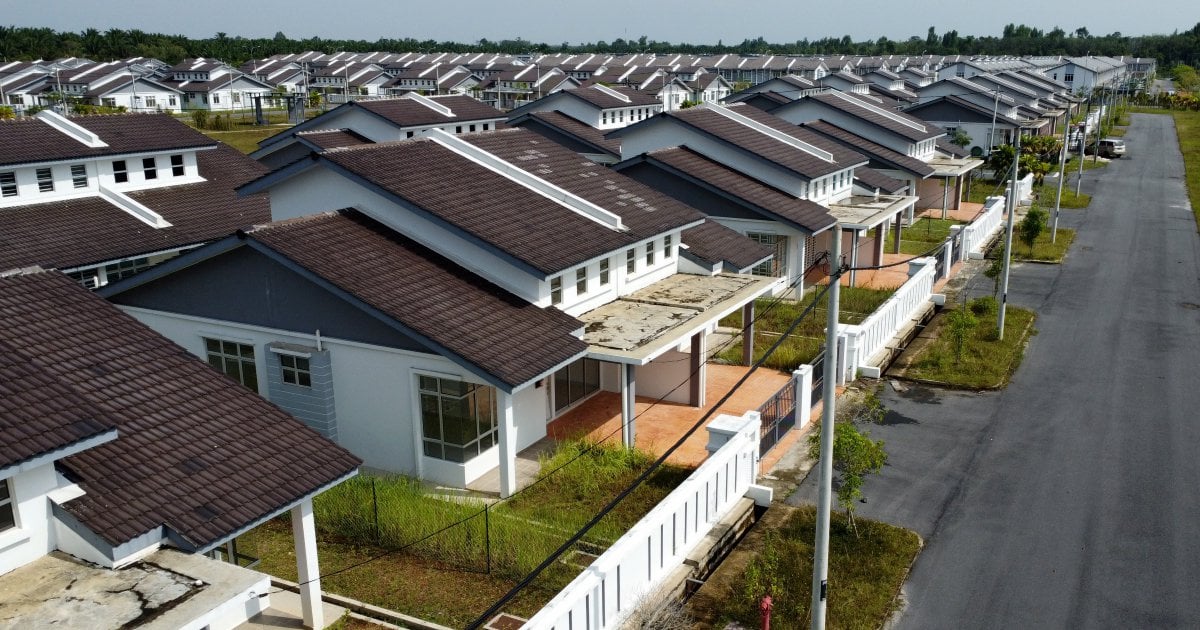
Published by AstroAwani, image by NewStraitsTimes.
It should be noted that, regardless of our origin, housing is a necessity and should be guaranteed as a basic human right. In fact, Maslow’s Hierarchy of Needs place shelter (another word for housing) at the very base of the pyramid, alongside food and water, which are also enshrined as fundamental human rights.
Yet, in Malaysia, it appears that not many people can afford to own a house.
The primary issue surrounding housing is often affordability, with many individuals simply not earning enough to purchase a house or facing prohibitively high prices. Indeed, in Malaysian context, many studies over recent years have identified financial concerns as a significant factor contributing to overhang properties and influencing respondents’ decision to buy a house (Mariadas et al., 2019; Daud et al., 2022; Mustapa et al., 2023; Zulkifli & Ismail, 2023; Chung, 2024).
However, what does “affordable” truly mean?
The Ministry of Housing and Development (KPKT) has capped the maximum price for affordable houses at RM300,000 (2019). Hence, the government focuses heavily on providing houses priced below this threshold.
According to the National Property Information Centre (NAPIC), 39.2% of newly launched residential properties in the first half of 2024 are priced below RM300,000 (2024).
Yet, 30.2% of overhang residential properties are priced below RM300,000, followed by 29.6% within the RM500,001 to RM1 million range, and 23.8% within the RM300,001 to RM500,000 range. The remainder are priced above RM1 million.
Apparently, despite sufficient affordable housing supply, housing affordability remains a significant issue among Malaysians, a situation that has perplexed even some experts (Daud et al., 2022).
It is important to note that affordability varies significantly by location and income, and the “affordable” pricing defined by government agencies might not reflect the reality for much of population.
According to Bank Negara Malaysia (BNM), a household with a monthly income of RM8,333 can afford a house priced at a maximum of RM300,000 (2021). A monthly income above RM8,000 would place a household within the M3 tier of the M40 income group, according to 2019 classification (The Rakyat Post, 2020).
Furthermore, the report mentioned that, based on the Median Multiple Affordability indicator, the majority of housing prices in all states and territories (excluding Melaka) were rated as “seriously unaffordable”, exceeding 4.1 times the annual household income (BNM, 2021). This calculation was based on a median house price of RM295,000 in 2020 and a median annual income of RM62,508 or RM5,209 per month.
In 2022, the median household income in Malaysia was RM6,338, which implies that, based on the Median Multiple Affordability indicator, the median house price stood at 3.9 times the median income. This places it at the upper limit of “moderate unaffordable,” which is capped at 4 times the income (Department of Statistic Malaysia, 2023). Notably, half of Malaysian households earn less than this median income.
Among all states and territories, Perak has the highest number of overhang residential properties.
To be affordable for 50% of the population in Perak, a house would need to be priced at RM161,784 or less, based on the state’s median household income of RM4,494 in 2022. However, according to NAPIC data cited by the Khazanah Research Institute (2023), only around 4,000 residential units launched nationwide in 2022 fell within the RM100,000 to RM200,000 price range.
This affordability challenge is further compounded by rising living costs over the years, with a 2022 survey revealing that 66% of Malaysian knowledge workers are holding two jobs to reduce financial pressures (The Edge, 2022).
With stagnant salaries and rising living costs, housing – even rentals – has become more expensive, forcing more people to live paycheque to paycheque, leaving little to no room for savings (refer to “The High Cost of Living: Dilemma of Fresh Grads” for further insights).
This greatly affects the ability to save for a housing downpayment. A study by the Centre (2022) found that 44.45% of respondents who rent cannot afford a downpayment for a house. Among these renters, 48.44% in the Klang Valley (which includes Kuala Lumpur) cited this as the main reason they continue renting.
Breaking it down by age group, 46% of renters aged 20 to 29 cannot afford a downpayment, while 19.6% in this group were unable to secure a loan. Alarmingly, although more renters in the 30 to 39 age group can obtain loans, 47% still cannot afford a downpayment.
The government did introduce various housing policies aimed at different income groups to support access to housing, such as the People’s Housing Project (PPR) for the B40 income group and PR1MA, mainly for the M40 income group.
Yet, availability issue persists, with the waiting list for PPR showing no signs of improvement, as over 19,000 people in Sabah remain on the waiting list as of December 2023 (Daily Express, 2023).
This highlights an additional national challenge in affordable housing – geographic distribution.
In the first half of 2024, Sabah recorded an 80.3% year-over-year decline in new residential properties launches, with only 207 units launched compared to 1,051 in the first half of 2023 (NAPIC, 2024). Of these, only 29 newly launched units were sold in the first half of 2024.
While it is true that over 30% of overhang residential properties are priced below RM300,000, it is also important to recognise that these properties are in not always located where they are needed the most. Additionally, NAPIC does not report overhang volumes by price range across different states. Thus, although Kuala Lumpur has over 3,000 units of overhang residential properties, the specific price range for those units remains unknown.
Research indicates that location and infrastructure rank among the top concerns for B40 and M40 buyers, after financial considerations (Mariadas et al., 2019; Daud et al., 2022; Zulkifli & Ismail, 2023). In addition, 30.69% of surveyed renters in Klang Valley cited location as a primary reason for renting (The Centre, 2022).
This should come as no surprise, given that car-centric urban design has long undermined the importance of public transport, making many locations difficult to access without a private vehicle.
The lack of connectivity to inner-city areas, where most jobs are concentrated, combined with limited access to essential facilities (i.e. schools, healthcare, and marketplaces), increases the cost of living and the time spent in traffic.
Unfortunately, housing developers are more likely to build affordable housing in suburban or outskirt areas due to lower land costs, while pricier land in city centres is typically used for high-priced developments.
NAPIC (2024) reported that the average house price in Kuala Lumpur is RM780,728, placing it within the RM500,001 to RM1 million range which is ranked second for both overhang residential properties (29.6%) and newly launched residential properties (30%).
Even if houses in favourable locations are offered at lower price points, unless they fall under government housing schemes with strict requirement for buyers, it is uncertain whether they will go to first-time home buyers or to those looking to generate rental income and profit through market speculation.
According to MyCensus 2020 (as cited in Khazanah Research Institute, 2023), around 1.8 million living quarters were found to be vacant, with 704,935 units, or 39% of these vacant properties, being newly completed or awaiting rental or sale.
Malaysia’s housing issue, like many other challenges, is multifaceted. While there are numerous potential solutions, these can be complex or lengthy to implement.
Improving infrastructure and urban planning, especially through enhanced public transport, could help bridge the gap between city outskirts and inner cities, while also reducing car dependency.
Furthermore, the government could capitalise on Public-Private Partnerships with housing developers to encourage the industry to adopt prefabricated construction techniques. As summarised by Rocha et al. (2022), this approach has been proven in multiple studies to be cost-effective, safer, faster to construct, and environmentally sustainable, despite the higher initial costs.
In addition to direly needed significant improvements in urban planning with a focus on public transport and industry innovation, regulations such as rent control could help to limit rising rental costs. This would allow people to alleviate some of their financial pressures and potentially build savings for a future housing downpayment.
Housing, while viewed by some as an investment, has become increasingly unaffordable for others. With this trend in mind, it is essential to ask ourselves: Is housing a necessity, or merely an avenue for speculative investment?
Chia Chu Hang is a Research Assistant at EMIR Research, an independent think tank focused on strategic policy recommendations based on rigorous research.

